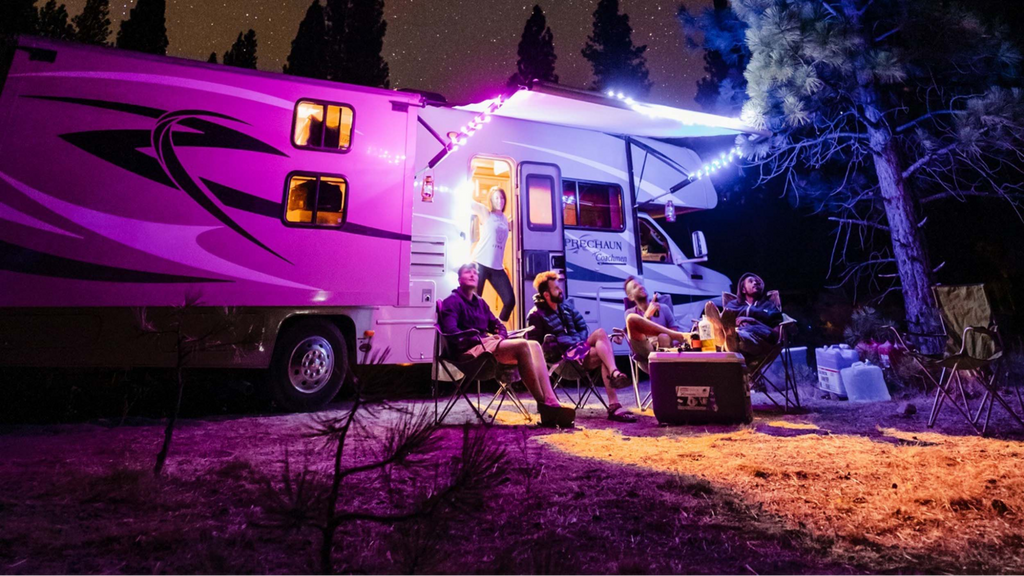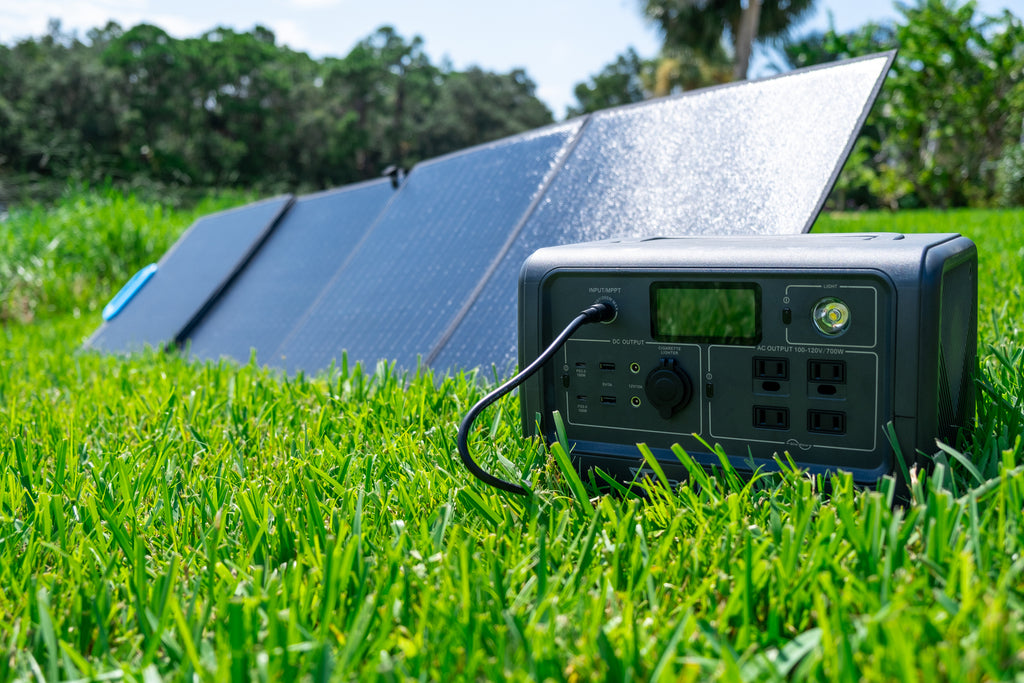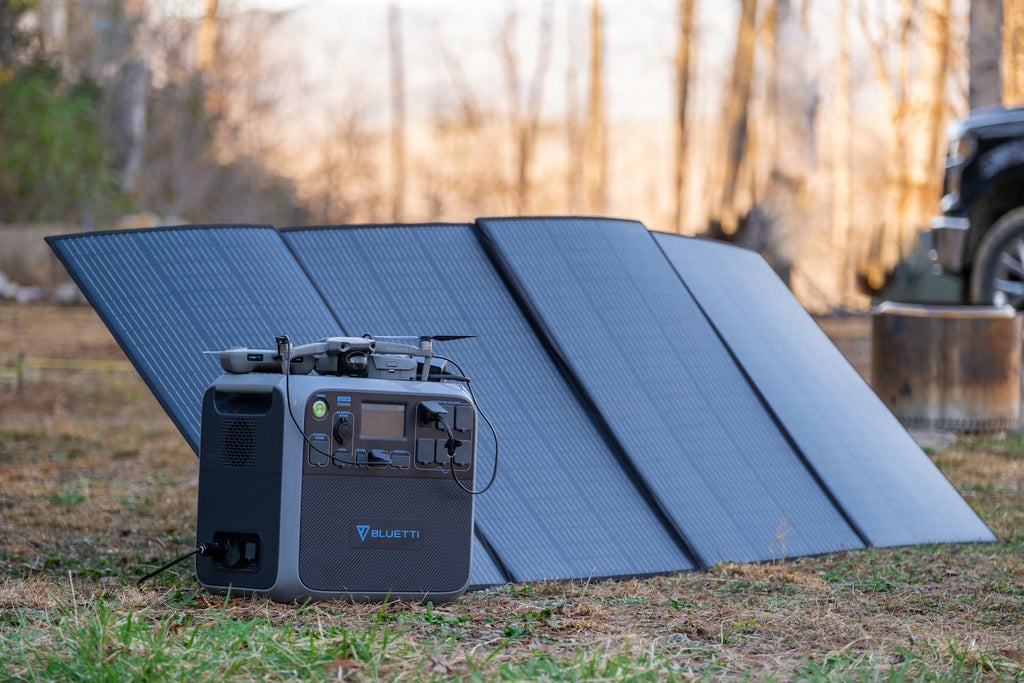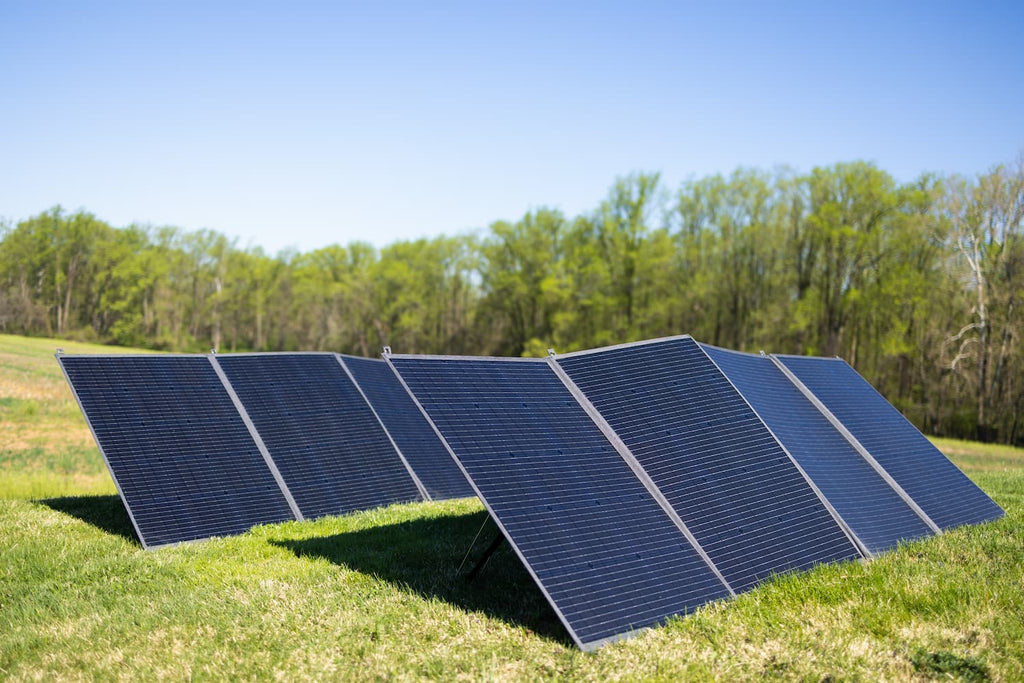There is surely a charm in having sunlight collectors installed on your truck, or even being able to carry a portable one, as it finds a new way to harness renewable electricity for your trip. That is to say, running your appliances and devices entirely free of outside resources. The best part of the deal comes at the very end: you save money and reduce your environmental footprint all at once while adding a dollop of comfort to your travel.
This article is your go-to guide to the best solar panel for RV. We cover everything from the number of panels you need, the types available, the best models in the market, and how to set them up. We will also cover the extra components that you might need.
How Many Solar Panels Do I Need for My RV?
To figure out, start by calculating your daily power usage. Add up the watt-hours (Wh) of all your devices. Say, four LED lights used for six hours consume 40 W x 6 hours = 240 Wh. Do this for every device and tally up the total Wh per day.
Next, understand the power that each solar panel for RV can churn out on daily doses. This always depends on sunlight and wattage. As a rule of thumb, each watt of solar panel can give 4 Wh per day in optimal conditions. Then, a 100W solar panel can churn out 400 Wh a day.
Thirdly, you would achieve the number of panels required to make the total Wh per day by dividing the total Wh per day by the Wh per panel. For example, if a household was estimated to use 2,860 Wh per day, then 2,860 / 400 = 7.15 panels. There are eight 100 W panels available, so if your RV roof can spare the space, you might want to go with larger panels.
Types of Solar Panels for an RV
Selecting a solar panel for your RV is like selecting that ideal travel buddy: one that matches and functions well.
Monocrystalline stands as the high-flyers, being made from single-crystal silicon cells, offering top-notch efficiency and durability. Still, though, they are a bit high-priced and also need a considerable amount of space on your RV roof.
Polycrystalline panels are actually more of a jack-of-all-trades sort. They are composed of silicon cells which contain lots of crystals, which means they have reasonable efficiency and durability but at a more competitive price. However, they do take up quite a lot of roof space.
The thin-film panels are the flexible kind, with a thin photovoltaic layer on a flexible or rigid base and the least efficient and long-lived kind of panels. They are, however, low priced and light—low on the pocket, but also on the weight scale. Plus, they are flexible: they can be conformed to either flat or bent surfaces. Just perfect for an RV with hardly any roof space.
Related articles: How Many Solar Panels Are Needed to Run an RV?
What Size Solar Panel Do I Need to Keep RV Battery Charged?
What Is the Best Type of Solar Panel for an RV?
Having an individually tailored panel system means that the perfect solar panel for an RV is not so much one size fits everyone, but rather choosing the right outfit in terms of style and budget, and what sort of occasion is being observed. Here are some factors to consider:
- Size, of course, matters. The size of the panel is what really determines how much real estate it's going to take on your RV roof, or in your storage compartment. Measure your available space and pick a panel that fits like a glove. In most cases, monocrystalline panels are more compact than the rest with the same wattage.
- Efficiency is key. This means how well the panel converts sunlight into electricity. The higher the efficiency, the more power you get per area. Leading in this, then, are the monocrystalline panels, with polycrystalline and thin-film following.
- Temperature should be considered as an operating condition. It will affect the performance and lifespan of a panel. A higher temperature will affect the efficiency and lifespan of the panel. Thin-film handles heat better than mono or polycrystalline panels.
- Price is an equalizer for quality. Monocrystalline may be the most expensive, yet most valuable for each dollar spent on power and the longest life. The lowest efficiency will have polycrystalline panels, and generally, they are cheaper; as such, they have lower durability as well. Thin-film panels are the budget option, but they also have the lowest efficiency and lifespan.

How Much Do RV Solar Panels Cost?
The RV solar panels come at a price much less than your home solar systems, though all depends on the size and type. One is able to get even the smallest solar kit at a price of less than $810 CAD. Check more details below:
BLUETTI PV200 Solar Panel

This wonder of 200W monocrystalline priced at C$569.00 can juice up your RV batteries and appliances with outstanding efficiency of up to 23.4%. Not only is it powerful, but it also resists the onslaught of dust, water, and corrosion via a protective coating composed of highly durable ETFE.
But that's not all, because it features a foldable panel and portability for ease in setup and storage. It is equipped with MC4 connectors, and that only means that the sunshine collector is compatible with most of the sunlight generators in the market, such as AC200P and AC300.
BLUETTI PV350 Solar Panel

This 350W monocrystalline marvel delivers more power to your RV devices courtesy of the high conversion rate. Installation is easy with the kickstand included to increase exposure to the sun's rays. Boasting a rugged and splash-proof design, it is made to last the test of time.
Compatibility? Look no further. It interfaces well with a number of BLUETTI sunshine generators, including the AC180, AC200P, AC200MAX, AC300, AC500, and EP500Pro. Not to mention, it is foldable and portability-featured, thus taking it from place to place or storing it is a piece of cake. It sells at C$899.00, quite fair for the kind of product in it considering its top-class features and quality.
BLUETTI PV420 Solar Panel

Imagine a power house of a sunlight collector, and not just any power source. Introducing the PV420. This is a 420W monocrystalline solely built for a fast and efficient solar power to your RV devices. With a high 23.4% conversion rate, it's like a sun magnet capturing more sunlight and turning it into electricity.
The panel is coated with an ETFE that lasts, which gives protection against dust, water, and corrosion. Is it compatible? Look no further. This panel fits perfectly with most of BLUETTI's solar generators, such as AC200P, AC200MAX, AC300, AC500, and EP500Pro. Priced at C$1,099.00, it has to be considered a fair value for money, given the excellent quality and features.
Roof-Mounted vs. Portable Panels Setup
Picking a solar panel for an RV is almost like picking a homemade meal versus takeout. It has its advantages and downsides, but everything will boil down to your taste and your needs.
Roof mounted panels are similar to a home-cooked meal, they are mounted on the roof of your RV, pre wired to the battery, which holds the whole system into place, providing convenience and durability. However, just like in-home meals, there is a need to have enough ‘kitchen space’—or with roof-mounted solar panels, enough ‘ingredients’ in the form of sun exposure—to cook up that home-cooked meal.
On the other hand, portable panels would be like takeout, mobile and flexible and ready to go wherever you go. But like takeout, they may not be as 'nutritious' (efficient) and could be 'spilled' (vulnerable to theft or damage).
RV Portable Solar System Parts
Consider powering your RV with portable solar panels as a team sport. The star of the show is the solar panel for RV, but it can't win the game all by itself—a solar panel needs a good support team. Here's the squad:
- Solar Battery: It is a powerhouse by which extra electricity that is being produced by the solar panel can be saved for some other time. They have the options here to choose from: either the lithium or the lead-acid battery.
- The Solar Inverter: This translates for the converter, translating the direct current power that most appliances understand and can use.
- Solar Charge Controller: It works like the coach to your team, managing the process of charging the battery and ensuring proper charge or cut off of the battery. Depending on the voltage of your solar panel and battery, you can select one: PWM type, or MPPT.
Final Thoughts
Solar panels make your RV a green machine, ecologically sound and self-contained, saving you a pretty penny on fuel and hookups in the long run.
But, as they say, there's more. With your unique energy needs, budget, and preferences as a compass, one shall navigate their way to the perfect solar panel for RV. Will it be the roof-mounted one, soaking in sun rays as one drives, or possibly the portable one, offering portability and convenience? Maybe a combination of both to ensure you’re never without power?




